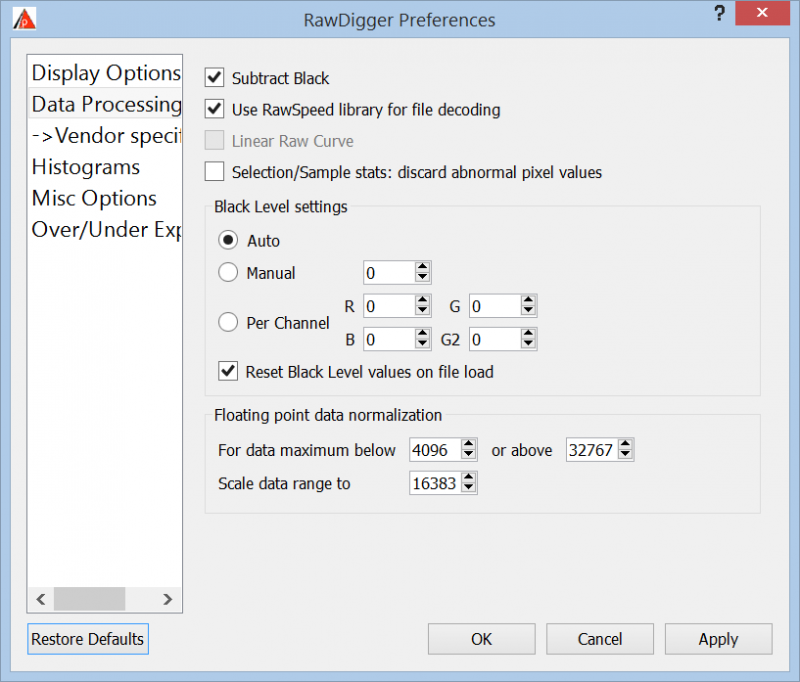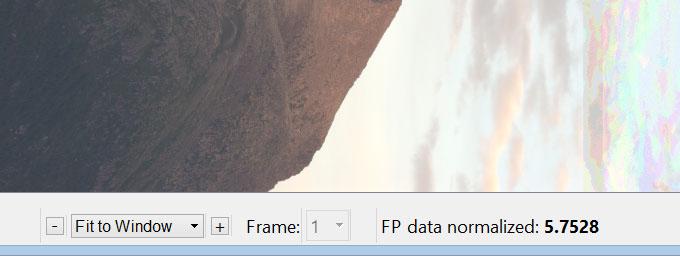Submitted by lexa on
Starting with version 1.2, RawDigger supports DNG files containing floating point data. This format is used as an output by a number of programs that overlay several shots in order to extend the dynamic range and thus create HDR (High Dynamic Range) data.
Unlike regular integer raw files, the data range in raw files containing floating point data can be very small, like (0..1) or quite large, (0..1000000). The range does not affect data processing, and is selected by the authors of the respective programs based mostly on convenience.
Internally, RawDigger uses 16-bit unsigned integer data representation. Thus, the floating point data raw files are converted to internal RawDigger data format; and if the range of floating point data is too small or to large, normalization is performed (input floating point data is multiplied by a certain coefficient).
Normalization is controlled through the settings in Floating point data normalization в Preferences – Data Processing
If the actual data range in the current raw file or the data maximum as it is set in metadata through WhiteLevel tag in DNG) exceeds the range “below XXX or above YYY”, all the pixel values (data numbers, DNs) in such a file will be multiplied by a constant, calculated in such a way that the new actual maximum will be equal to the value in the field ‘Scale data range to’.
If upon opening a file such normalization was applied, the satus bar in RawDigger will contain ‘FP data normalized: the value of the multiplier used for normalization’:
Please be careful: because of the normalization the shapes of the histograms of properly exposed and underexposed shots will look similar because the multiplier for the underexposed file will be set to a larger value, «compensating» for the smaller actual maximum in raw data.



Add new comment